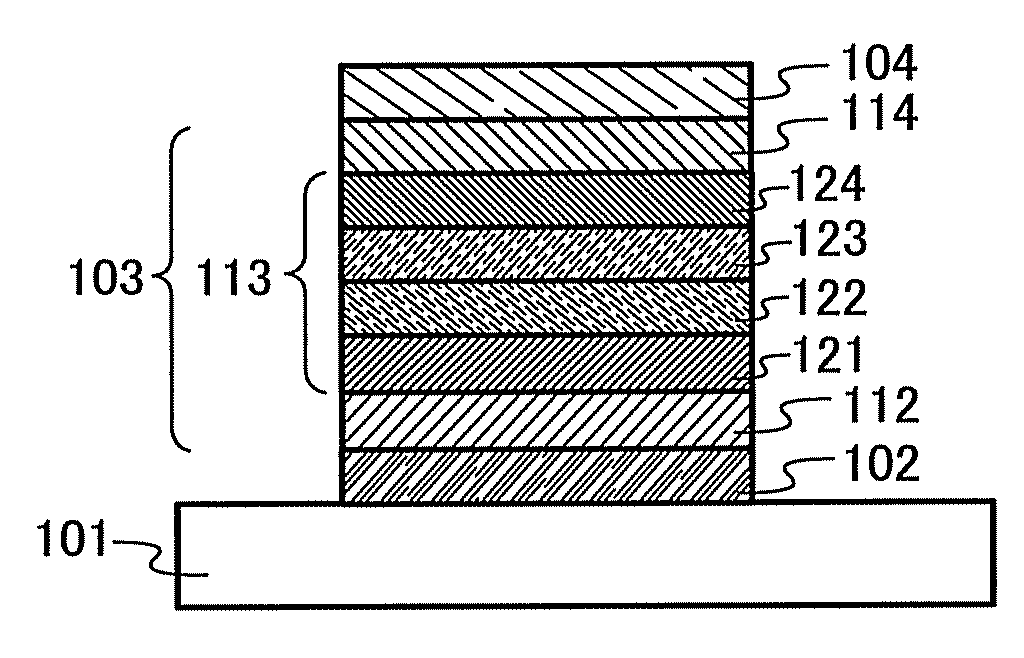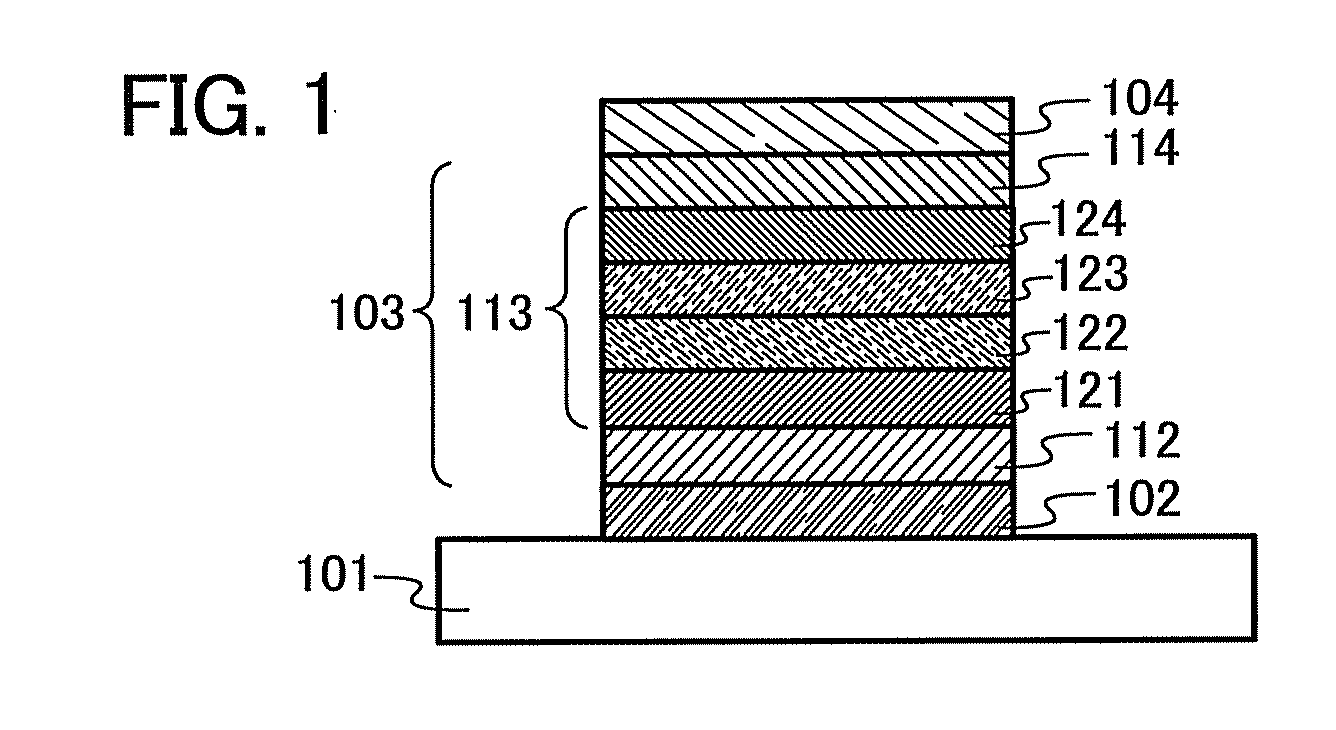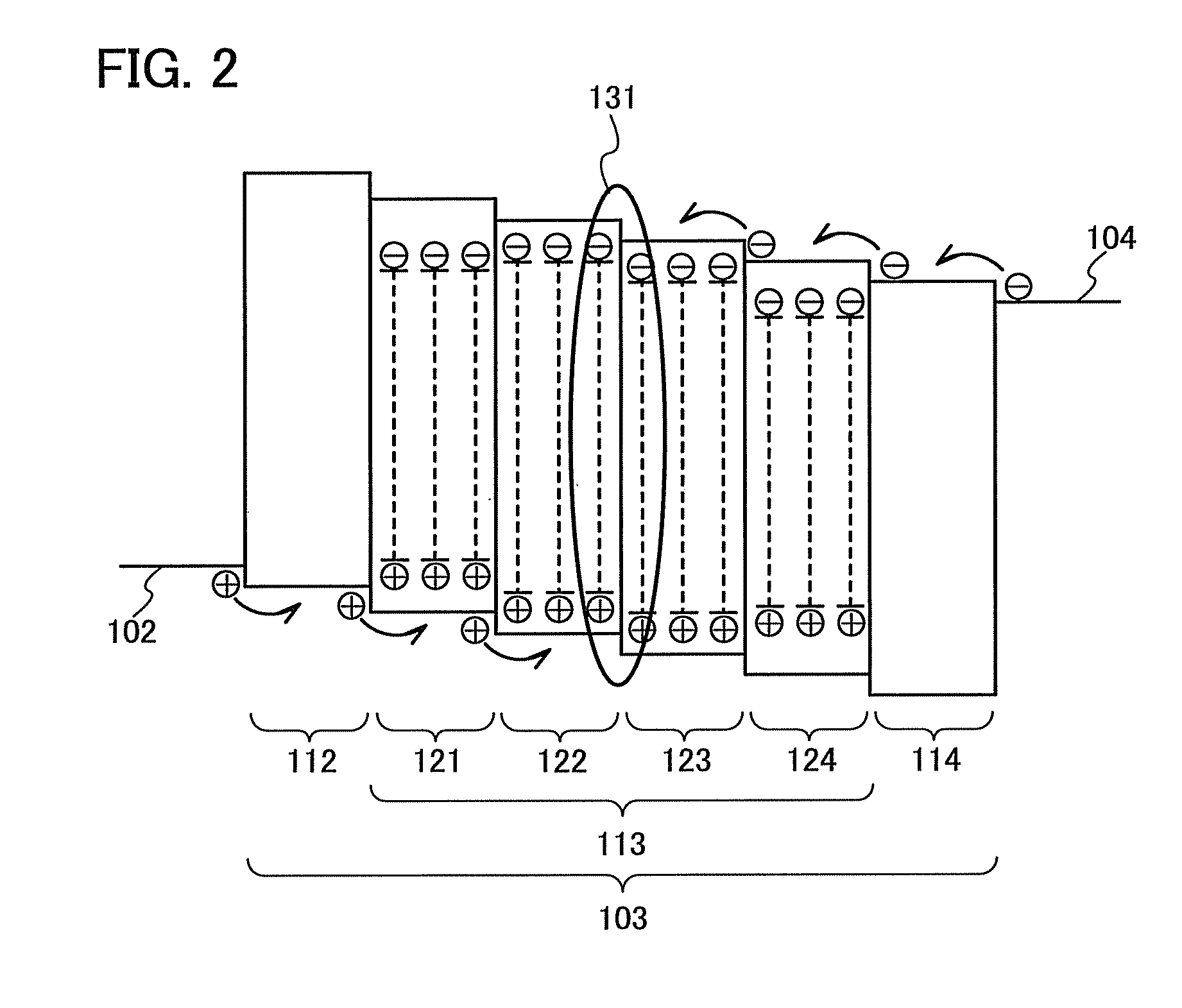Light Emitting Element, Light Emitting Device, and Electronic Device
a technology light emitting devices, which is applied in the direction of discharge tubes/lamp details, discharge tubes luminescnet screens, electric discharge lamps, etc., can solve the problems of difficult to obtain point sources, and the inability to transfer the triplet excitation energy of blue emissive fluorescent compounds to an anode side, etc., to achieve the reduction of power consumption of light emitting elements, light emitting devices, and electronic devices.
- Summary
- Abstract
- Description
- Claims
- Application Information
AI Technical Summary
Benefits of technology
Problems solved by technology
Method used
Image
Examples
embodiment 1
[0048]A mode of a light emitting element according to an embodiment of the present invention is described with reference to FIGS. 1, 2, 3, and 4.
[0049]The light emitting element according to an embodiment of the present invention has a plurality of layers between a pair of electrodes. In this specification, the plurality of layers formed between the pair of electrodes is collectively referred to as an EL layer. The EL layer has at least a light emitting layer.
[0050]In this embodiment, the light emitting element includes a first electrode 102, a second electrode 104, and an EL layer 103 formed between the first electrode 102 and the second electrode 104, as illustrated in FIG. 1. Note that in this embodiment, the first electrode 102 serves as an anode and the second electrode 104 serves as a cathode. In other words, when voltage is applied to the first electrode 102 and the second electrode 104 such that potential of the first electrode 102 is higher than that of the second electrode...
embodiment 2
[0111]In this embodiment, a light emitting element (a stacked type element) in which a plurality of light emitting units according to an embodiment of the present invention is stacked will be described with reference to FIG. 7. This light emitting element is a light emitting element having a plurality of light emitting units between a first electrode and a second electrode. As the light emitting units, at least a light emitting layer may be included, and a structure similar to that of the EL layer described in Embodiment 1 can be used. In other words, the light emitting element described in Embodiment 1 is a light emitting element having one light emitting unit, and a light emitting element having a plurality of light emitting units will be described in this embodiment.
[0112]In FIG. 7, a first light emitting unit 511 and a second light emitting unit 512 are stacked between a first electrode 501 and a second electrode 502. A charge generation layer 513 is provided between the first l...
embodiment 3
[0118]In this embodiment, a light emitting device having a light emitting element according to an embodiment of the present invention will be described.
[0119]A light emitting device having the light emitting element according to an embodiment of the prevent invention in a pixel portion will be described in this embodiment with reference to FIGS. 8A and 8B. FIG. 8A is a top view illustrating the light emitting device, and FIG. 8B is a cross sectional view taken along line A-A′ and line B-B′ of FIG. 8A. This light emitting device includes a driver circuit portion (source side driver circuit) 601, a pixel portion 602, and a driver circuit portion (gate side driver circuit) 603 which are illustrated by dotted lines in order to control the light emission of the light emitting element. Reference numeral 604 denotes a sealing substrate; reference numeral 605 denotes a sealing material; and a portion surrounded by the sealing material 605 corresponds to a space 607.
[0120]Note that a leading...
PUM
 Login to View More
Login to View More Abstract
Description
Claims
Application Information
 Login to View More
Login to View More - R&D
- Intellectual Property
- Life Sciences
- Materials
- Tech Scout
- Unparalleled Data Quality
- Higher Quality Content
- 60% Fewer Hallucinations
Browse by: Latest US Patents, China's latest patents, Technical Efficacy Thesaurus, Application Domain, Technology Topic, Popular Technical Reports.
© 2025 PatSnap. All rights reserved.Legal|Privacy policy|Modern Slavery Act Transparency Statement|Sitemap|About US| Contact US: help@patsnap.com



